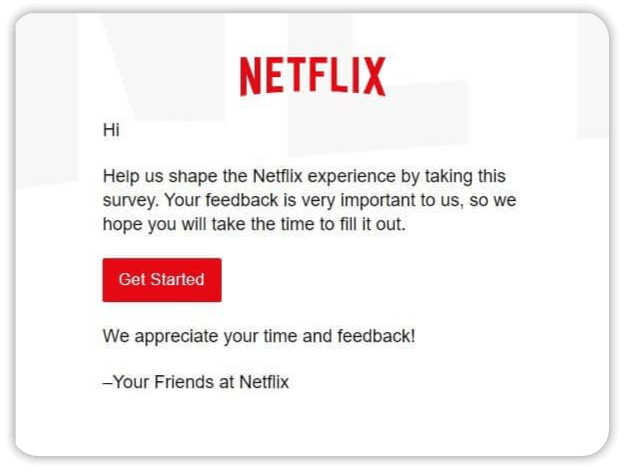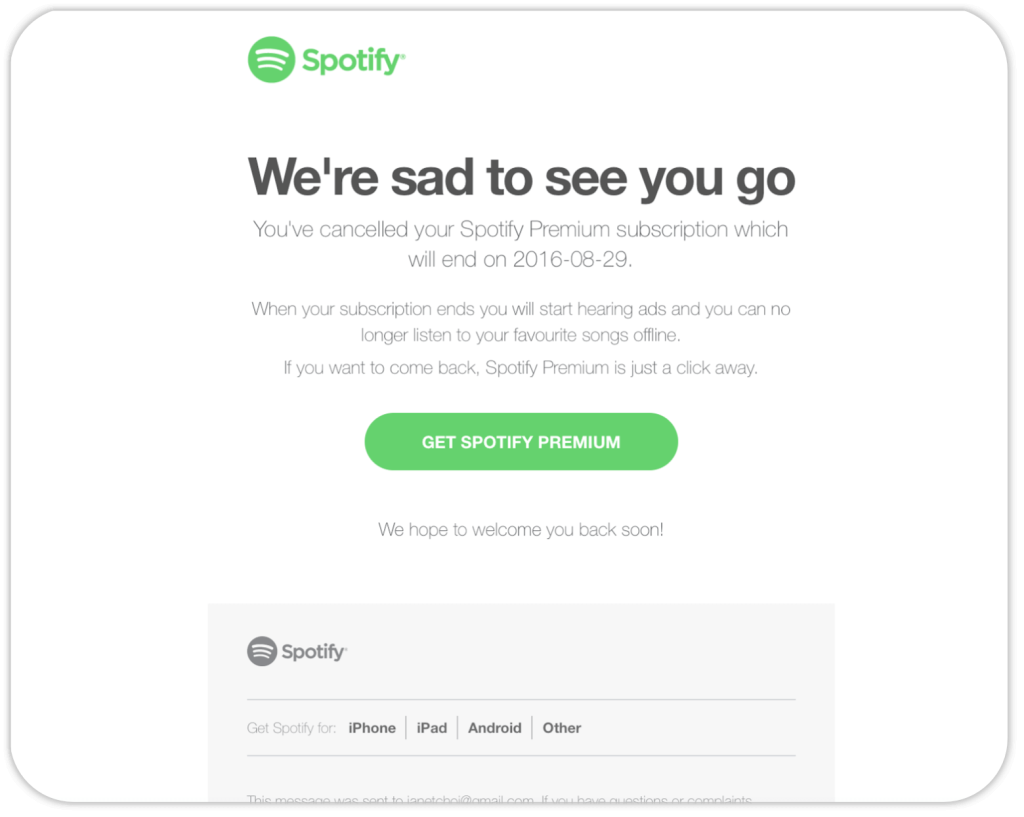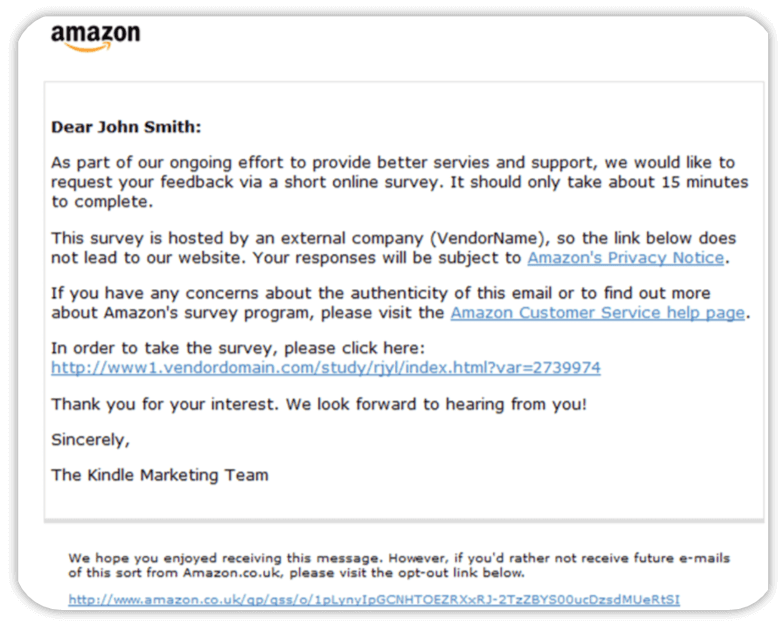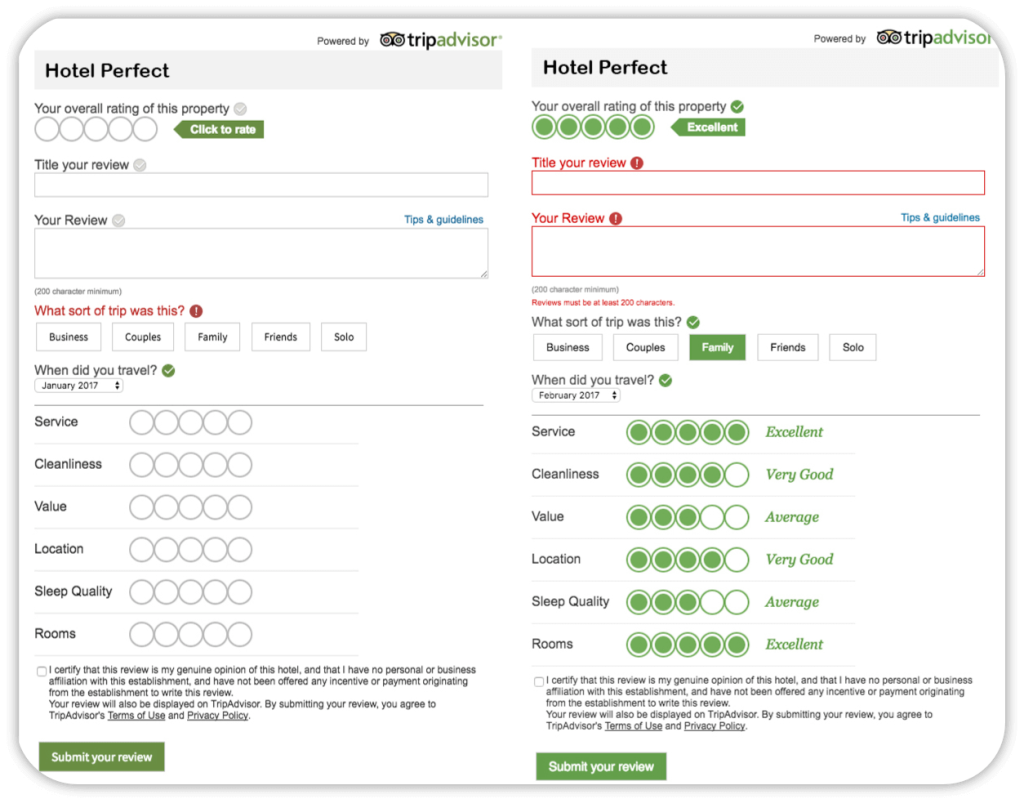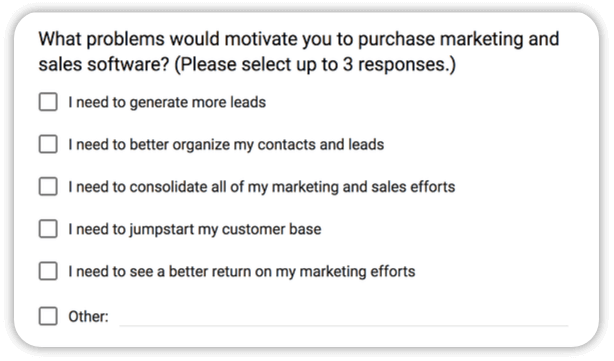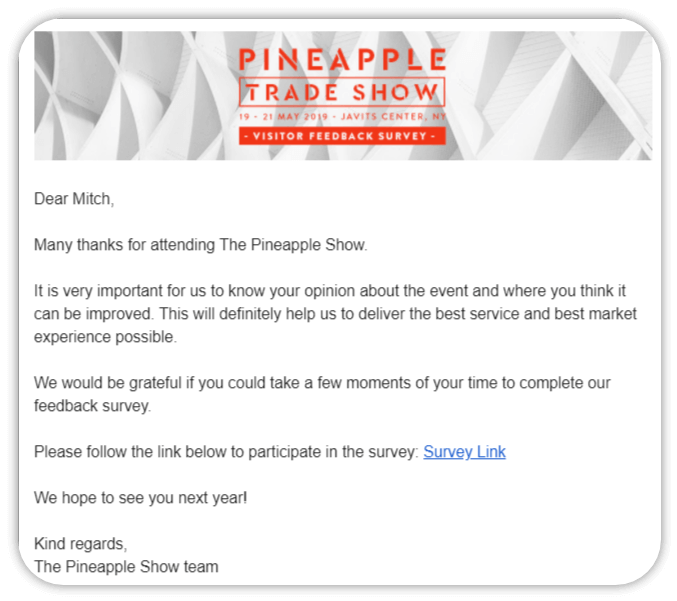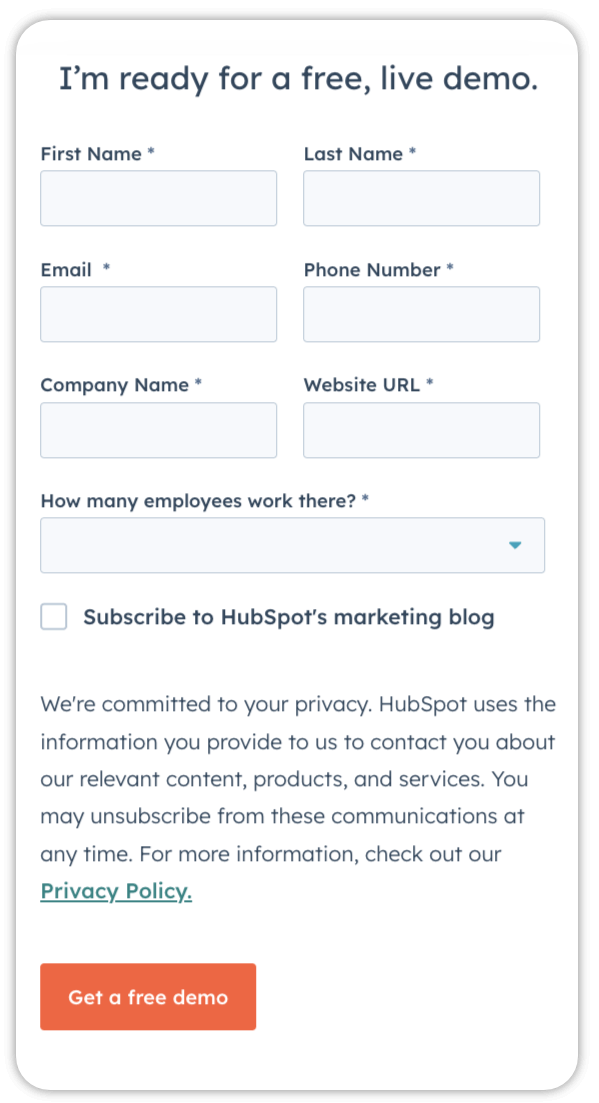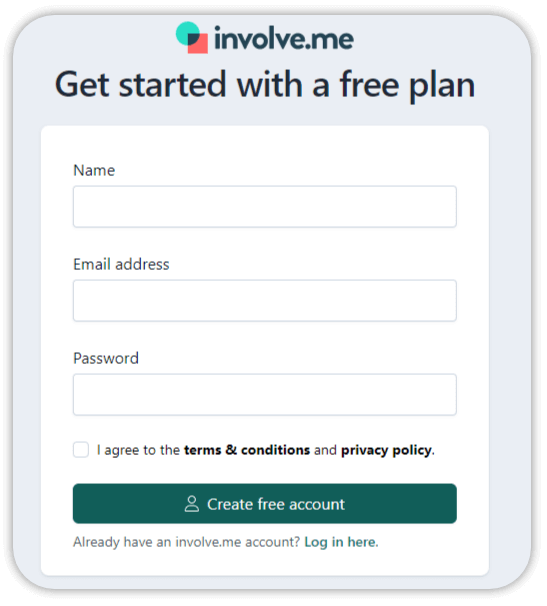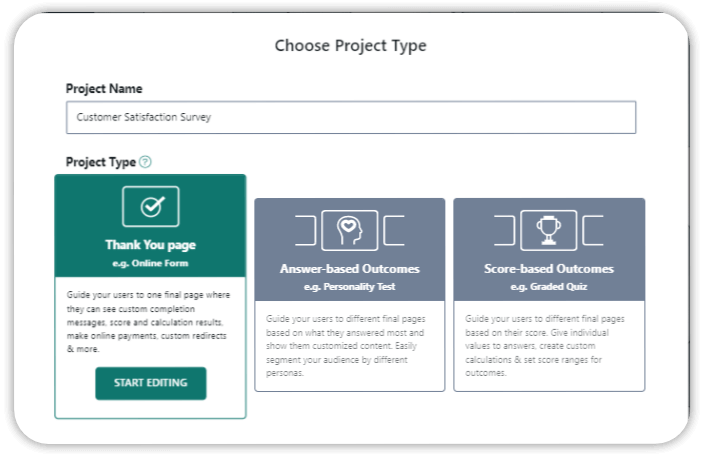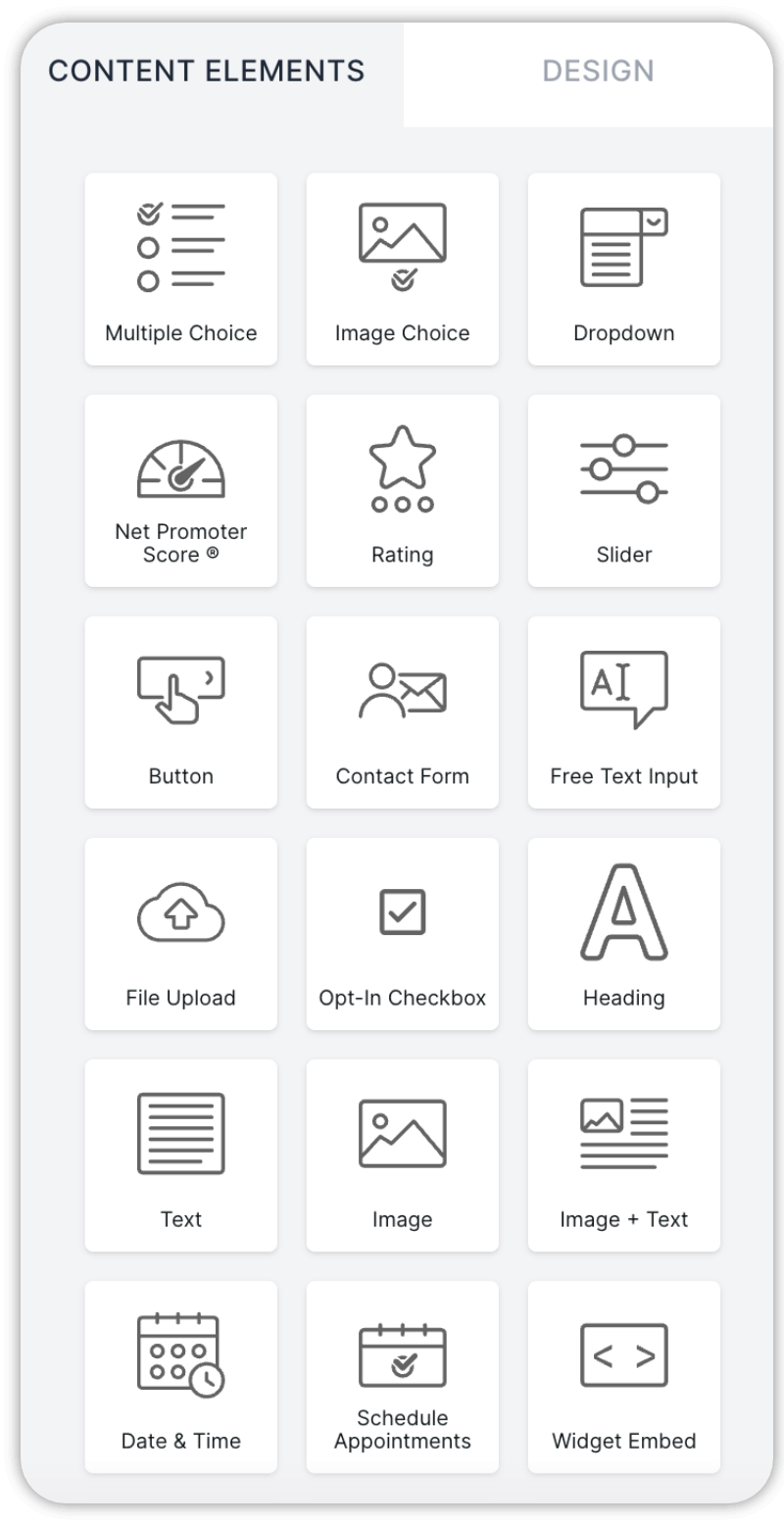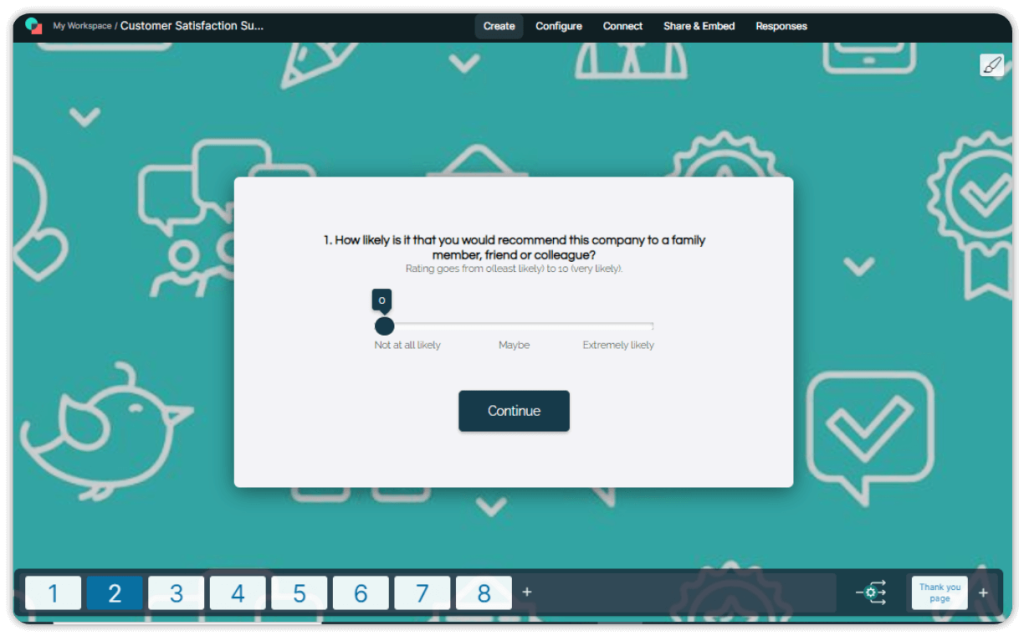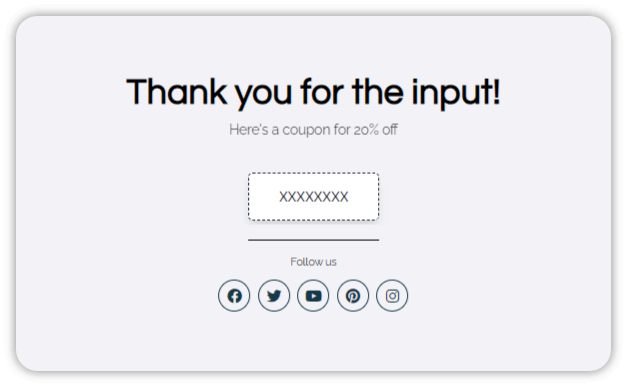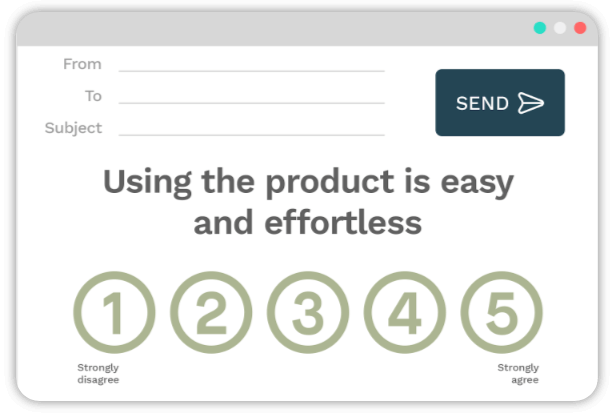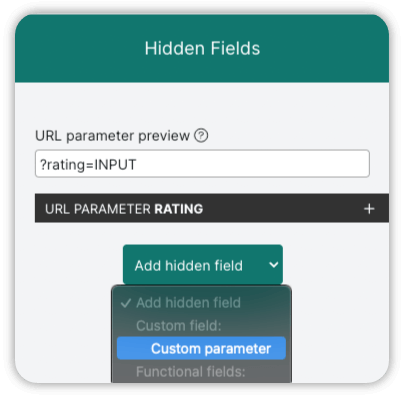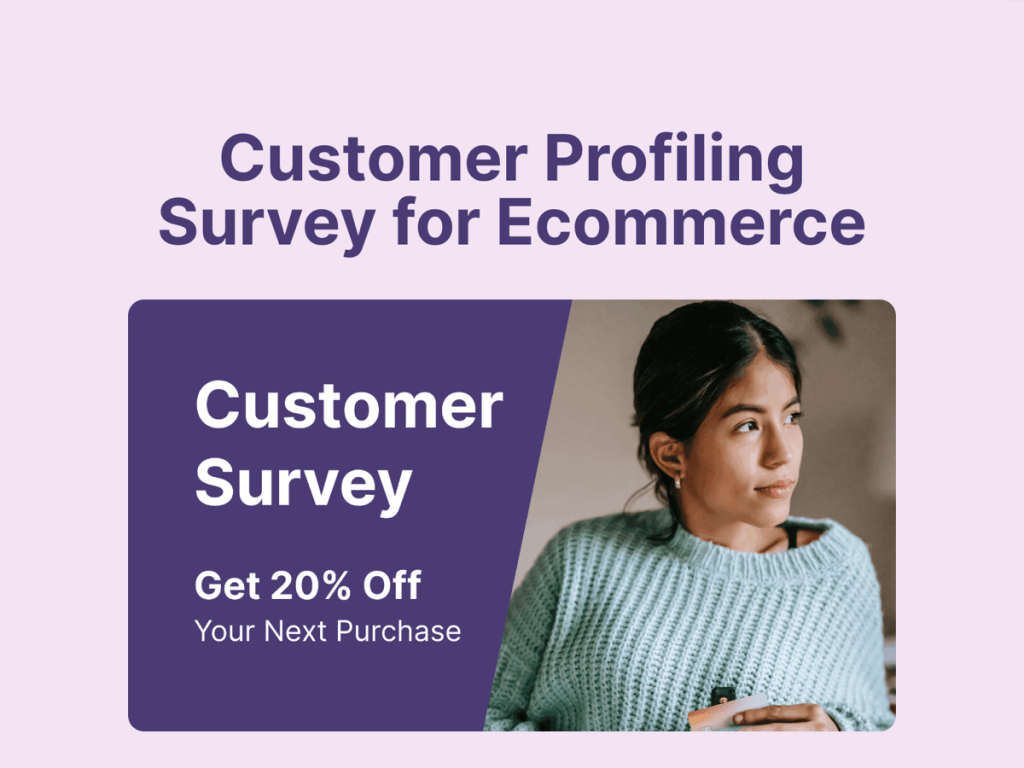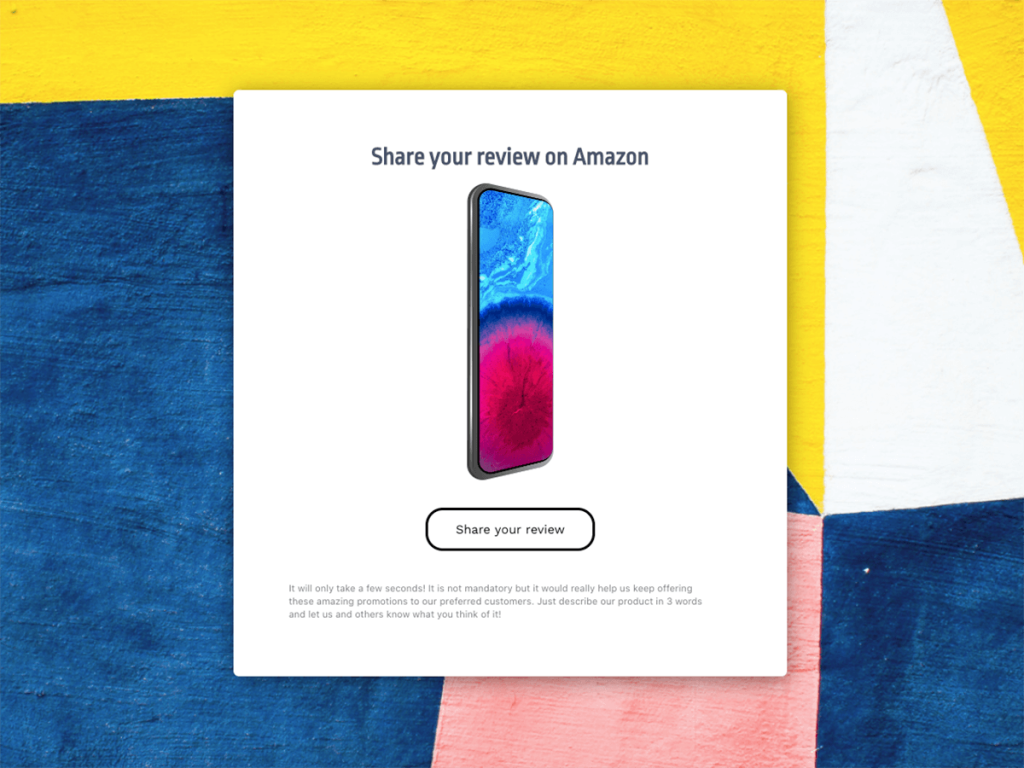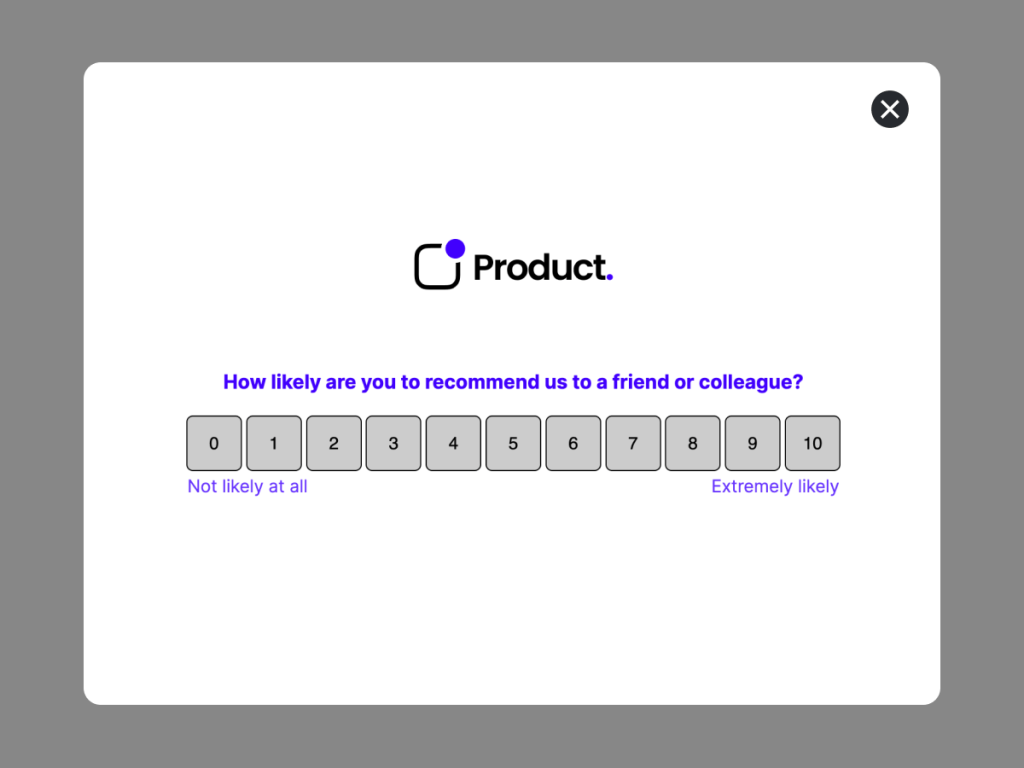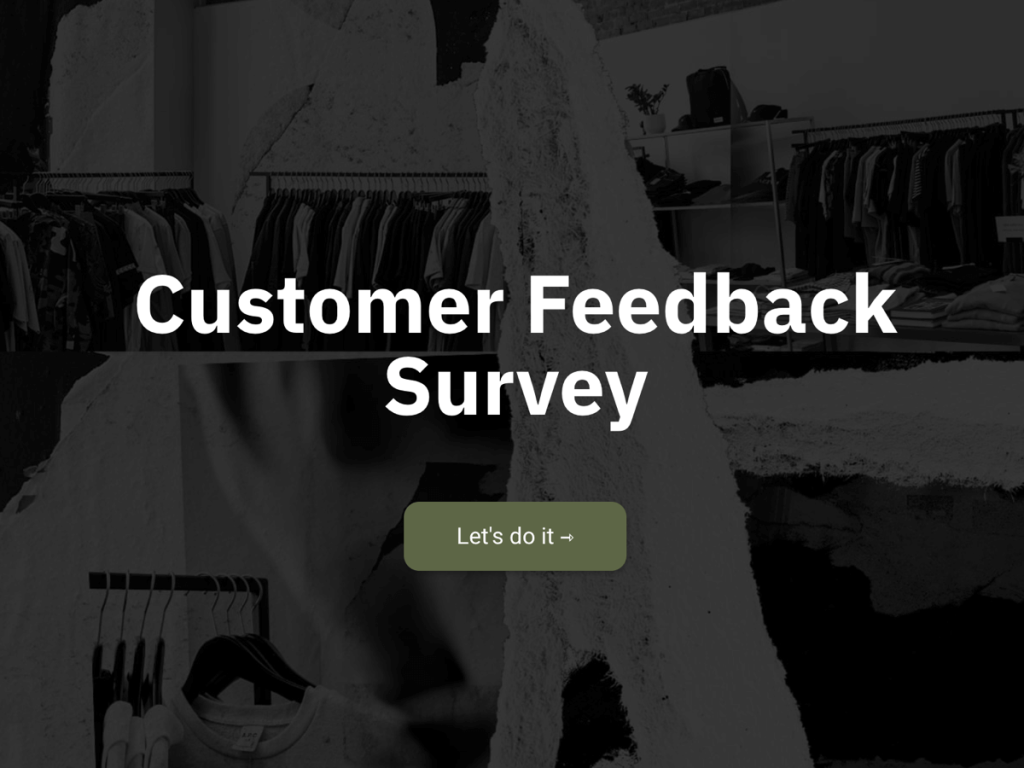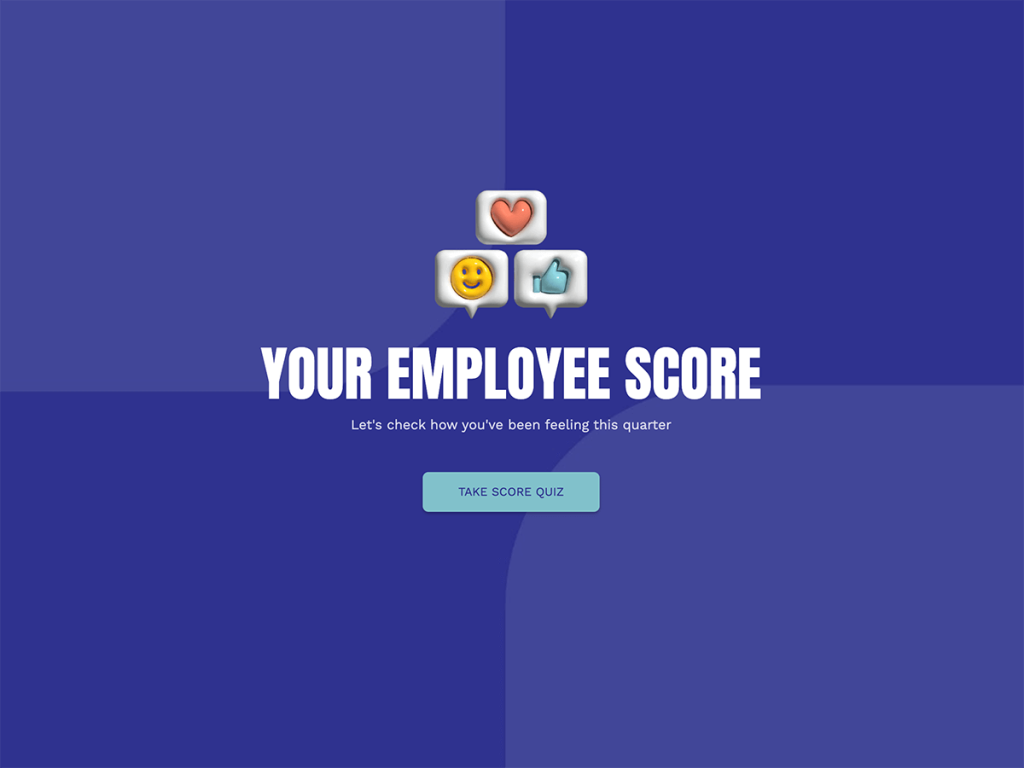Fact: 53% of content marketers use interactive content to generate leads.
That's because it's one of the easiest ways to capture customers' attention and create an engaging user experience. Besides, Forbes reports that 91% of customers buy from brands that bring personalized offers and recommendations.
How can you provide personalized offers tailored to your audience's needs at the same time? The answer is simple: surveys! With surveys you can learn what your audience wants and needs and give them customized offers accordingly.
In this blog post, we'll explore the benefits of online surveys, discuss the types of surveys you can create, and ways to embed and distribute your surveys. Whether you want to improve customer experience, increase employee engagement, or generate more leads, AI survey generators can help you achieve your goals. Here is how:
Types of Surveys (Free Templates+Examples)
To create a professional looking survey quickly and code free, you can use a drag-and-drop builder with pre-designed templates.
involve.me has a wide range of survey templates that businesses can customize to their unique needs. From NPS surveys and customer satisfaction surveys to lead generation surveys and employee surveys, involve.me has a template for every type of survey. Let's have a look at some:
1. NPS Surveys
Net Promoter Score surveys help businesses measure customer loyalty by asking how likely customers are to recommend products or services to others.
Airbnb is a popular platform that connects people looking for unique travel experiences with hosts who offer accommodations for rent.
The company uses the NPS survey to measure customer satisfaction and loyalty. After staying at an Airbnb accommodation, guests receive an email. The email includes a question asking guests to rate on a scale of 0 to 10 how likely they are to recommend Airbnb to a friend.
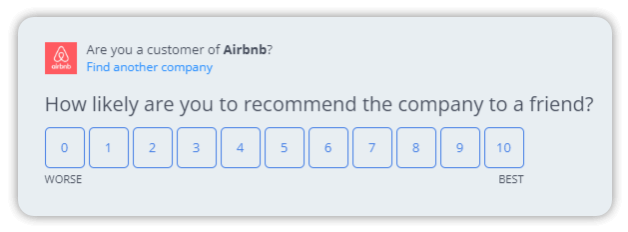
Based on the guest's response, Airbnb calculates its NPS score. Guests who give a rating of 9 or 10 are considered promoters, guests who give a rating of 7 or 8 are passive, and guests who give a rating of 0 to 6 are detractors. By tracking its NPS score over time, Airbnb can identify trends and improve its services.
2. Customer Satisfaction Survey
These surveys measure customers' satisfaction levels with company's products or services.
Netflix, for instance, has such a practice quite often. After watching a TV show or movie their customers receive an email, which includes a survey about their experience. A video streaming platform uses feedback to make improvements and identify areas for growth.
Additionally, Netflix uses customer feedback to decide which shows and movies to add to the platform and which content to produce in-house.
3. Cancellation Surveys
Cancellation surveys are used to determine why customers cancel a subscription or service.
One example of a company that uses cancellation surveys is Spotify. Spotify is a popular music streaming service that offers a large library of songs and podcasts.
After customers cancel their Spotify subscription, they receive a short survey asking them to provide a reason for cancelation. The survey inquiries are centered around the customer's experience with the service, including factors such as an insufficient music selection or technical problems.
Spotify leverages the insights gathered from these surveys to enhance its services and win back customers who have canceled their subscriptions. While monitoring cancellation reasons over time, Spotify can identify trends and make changes to retain customers and improve their overall satisfaction with the service.
Looking to collect feedback from customers who have canceled their subscriptions, involve.me's cancellation survey template is the ideal solution for that.
4. Customer Support Surveys
Customer support surveys help businesses gauge how well their customer service team meets individual customer needs.
Amazon uses customer support surveys to measure customer satisfaction with customer service. After each interaction with the Amazon customer service team, customers are asked to complete an email survey and rate their overall experience.
Amazon employs the feedback from these surveys to enhance its customer support processes and provide more comprehensive training to its staff.
Create a custom customer support survey with ease using involve. me's Customer Support Survey template.
5. Review Funnel Surveys
The use of Review Funnel Surveys can be of great benefit to companies. It's one of the ways to encourage customers to share their feedback by first asking them to rate their experience before submitting it to a review platform.
TripAdvisor, for instance, uses Review Funnel Surveys to encourage customers to leave feedback after each visit. Customers receive a short survey via email asking them to rate their experience.
After completing the survey, they can then leave a public review. This approach enhances the quality and relevance of reviews.
By using these surveys, TripAdvisor gains valuable insights into the customer experience and can identify areas for improvement to meet customer needs and expectations better.
involve.me's Review Funnel Survey template makes it easy for businesses to create surveys that drive customer reviews.
6. Market Research Survey
These surveys help businesses gather information about their target audience.
HubSpot conducts market research surveys to keep up with trends in marketing, sales, and customer service. The company has published a report on the state of inbound marketing, which was based on surveys and research conducted by HubSpot team and external sources.
By using market research surveys, HubSpot provides insights to its customers, as well as to the broader business community. Conducting market research survey can help businesses make informed decisions about their marketing, sales, and customer service strategies and stay competitive.
Use Market Research Survey template to create surveys that can help you better understand your customers.
7. Event Feedback Survey
Event organizers often conduct surveys to collect feedback from attendees. For instance, the Pineapple Trade Show's survey asked attendees to rate their overall satisfaction with the event, exhibitor quality, presentation relevance, and exhibit floor navigation.
The survey can also ask about specific aspects of the event, such as registration, food and beverage options, and networking opportunities. In addition, the survey can ask about the likelihood that attendees would attend the event again and recommend it to others, which helps organizers assess the effectiveness of the event and identify areas for improvement.
Check out involve. me's Event Feedback Survey template if you want to gather valuable feedback from attendees and improve your future events.
7. Lead Generation Surveys
Businesses use lead generation surveys in order to collect information about potential customers, their interests and preferences.
HubSpot uses lead generation surveys to capture information from prospective customers interested in their products or services. These surveys typically ask for contact information such as name, email address, and company name, as well as questions about the potential customer's interests and needs.
These surveys help identify potential customers interested in HubSpot solutions and target them with specific marketing campaigns. This results in generating new leads and growth in customer base.
Besides, the company gathers feedback from existing customers to identify areas where the company can improve its products and services, and to look for potential upsell or cross-sell opportunities.
To boost your lead generation efforts and enhance your marketing strategies, look at involve. me's Lead Generation Survey Template.
Benefits of Online Surveys
Discover the many advantages of online surveys and why companies are increasingly using them to gain valuable insights into customers, employees and market trends.
1. Improve Products and Services
Surveys help companies identify opportunities for improvements in design, features, and performance. They provide insight into customer preferences and enable companies to develop new offerings that meet customer needs. By leveraging customer feedback, surveys also reveal market gaps that can inspire innovation and give companies a competitive edge.
Suppose a company offering a subscription-based service notices a high churn rate among its customers. By sending a survey to the customers who canceled their subscription, the company can gather valuable feedback on why they canceled and what could have been done differently to retain their customers. Based on this feedback, the company can identify opportunities to improve its products or services, such as adding new features, improving customer support, or offering more flexible pricing options.
2. Enhance Customer Satisfaction and Loyalty
Surveys also play an important role in measuring satisfaction levels, addressing complaints, and personalizing marketing strategies. Companies foster loyalty and trust by valuing customer feedback, which can lead to positive referrals. With surveys, companies can create a win-win scenario for themselves and their customers.
For example, to improve the customer experience, a hotel chain sends out a customer satisfaction survey to their guests. Based on the survey results, the hotel chain finds that guests are dissatisfied with a long check-in process at the front desk. Since the hotel management is able to identify the problem, it can offer a clear solution, such as online check-in. As a result, the hotel chain earns a reputation for providing smooth and hassle-free service, which increases loyalty and a number of positive referrals.
3. Increase Employee Engagement
Companies can increase employee engagement and satisfaction by conducting surveys that show they value their employees' opinions. Companies can use surveys to improve employee engagement and performance and create a positive and productive work environment.
For example: A retail company can conduct an employee satisfaction survey to gather employee feedback and learn about the lack of development opportunities. The company can then respond by creating a new training program that boosts engagement and satisfaction, reducing turnover and improving productivity.
4. Make Data-Driven Decisions
Market research surveys are used to make informed decisions, optimize strategies, and stay ahead of the competition. The survey data helps to measure the effectiveness of marketing campaigns, product launches, and other initiatives. This allows businesses to make data-driven decisions on how to allocate resources and improve performance.
5. Establish a Competitive Advantage
Using surveys can give you a competitive advantage by helping you better understand your customers' needs and preferences, allowing you to develop targeted marketing strategies and a better customer experience. Listening to your customers builds your company's reputation and increases referrals. Gain an advantage over your competitors by making data-driven decisions and acting on feedback.
For example: a clothing retailer can send out an NPS survey to its customers to give them personalized recommendations and see how satisfied they are overall. A retailer might find that customers are satisfied with their shopping experience but would like to see a greater variety of products. The retailer can use this feedback to develop new product lines based on customer preferences.
6 Steps to Create Survey in 10 Minutes
Now that you know how important surveys are to growing your business, it's time to create your own survey with involve.me - and the best part is, it's a breeze! With easy-to-use drag-and-drop builder, you do not have to be tech-savvy or have any coding skills. I created a survey in just 10 minutes and am excited to share these simple steps with you. Let's dive in!
Step 1: Get Started With involve.me
First, you need to sign up for a free account with involve.me to access survey builder features and templates.
Step 2: Pick a Template or Build From Scratch
After logging in, head straight to the templates section to check out the 300+ editable templates that involve.me offers. Choose one that catches your eye, tweak it to fit your needs, and your survey is good to go! But if you feel extra creative today, don't worry - I'll guide you through the process of creating a survey from scratch, step by step.
Step 3: Choose the Project Type
The first step is to come up with a project name that perfectly captures the essence of your survey. I'll go with the "Customer Satisfaction Survey." Also, select the project type that fit your needs.
Step 4: Customize the Design
Customize the look of your survey. In the Content Elements section, you have a number of options. You can customize the background of the template to match your branding, give it a personal touch by including your brand's logo, and choose your fonts to maintain consistency with your brand's image.
Step 5: Ask Relevant Questions
The survey questions are crucial in obtaining useful customer feedback. Well-crafted questions can provide actionable insights, while poorly written ones might lead to generic and useless feedback.
To ensure your survey questions are effective, keep them brief, clear, and relevant. Depending on your goals, your survey can feature different types of questions, such as numerical ratings, multiple-choice options, or open text boxes.
Step 6: Publish Your Survey
Let your customers know you appreciate their feedback by creating a personalized "Thank You" page.
Do you want to give your potential leads something extra? With involve.me, you can also offer incentives such as coupons that can help strengthen the bond between you and satisfied customers, or even compensate dissatisfied customers. It's a win-win situation!
Once you have customized your survey, you can preview it. Finally, click the Publish button to activate the survey. Share your survey with the world by embedding it on your website, publishing it on social media, or emailing it to your subscribers.
Share Your Surveys Via Emails
Embedding your survey in an email can increase response rates and make it easier for recipients to access and complete the survey. Let's say you want to make it as easy as possible for your customers to take your survey without leaving their email. involve.me has the solution for you! By embedding your survey directly in your email, you can save your customers the detour via a separate web page.
Here's how to do it:
Recreate all the survey questions on any of your preferred email platform. Then, link each answer or image to the survey using a unique URL parameter, which will automatically save the parameter value as the first answer.
For example, the image labeled with the number 5 (indicating "strongly agree") is:
https://your-organization.involve.me/name-of-your-project?rating=5
Now, head over to involve.me survey editor window and create the hidden fields to collect the data in your project.
Once that's done, all the critical information gathered from the survey will be stored in the involve.me analytics, so you can easily access and analyze it.
Proven Ways to Boost Conversion Rates with Surveys
Surveys are a powerful tool for gathering essential feedback from your customers, and they can also enhance your lead generation efforts. By using surveys effectively, you can increase conversions and take your business to the next level. Here's how you can make the most of your survey:
1. Personalization
Use survey data to personalize your marketing efforts. By understanding your customer's needs and preferences, you can tailor your messaging and offers to better resonate with them, increasing the chances of conversion.
For example, a company selling skin care products conducts a survey and finds that customers are interested in eco- friendly and natural ingredients. Based on this feedback, the company can tailor its marketing messages and email campaigns to highlight the use of natural and sustainable ingredients.
2. Address Objections
Surveys are a great tool to identify the most common concerns that may be keeping prospects from converting. Use this information to address these objections in your marketing messages and sales process.
Here is how it's done: a software company conducts a survey and discovers that many potential customers are hesitant to buy their product because they find it difficult to use. The company addresses these concerns by creating video tutorials, free onboarding sessions for their leads and new customers, resulting in a higher conversion rate.
3. Improve Customer Experience
Use survey feedback to improve the customer experience. You can increase customer loyalty and retention by addressing pain points or dissatisfaction, leading to more conversions over time.
For example, an e-commerce store uses surveys to gather feedback from customers who have had negative experiences with their website. Based on this feedback, they adjust their processes, increasing customer satisfaction and conversions.
4. Optimize Sales Funnel
Use surveys at different sales funnel stages to gather feedback and optimize the process. When you understand where prospects are getting stuck or dropping off, you can make adjustments to increase conversion rates.
Suppose a B2B company uses surveys at different stages of its sales funnel and finds that many prospects drop off after a sales call. At this point, they can adjust their approach by sending follow-up emails with more personalized information.
5. Test and Iterate
Use surveys to test different messaging, offers, and website features to see what resonates best with your audience. You can continually improve conversion rates over time by iterating based on feedback.
For example, an online retailer can use surveys to test multiple website layouts and features to determine what appeals to its audience the most. By implementing changes based on the feedback, such as modifying product descriptions and redesigning the website, the retailer can then boost their conversion rates and generate more sales.
Final Words
Online surveys offer a game-changing opportunity for businesses to gain valuable insights and feedback from their audience.
Use different types of surveys to improve customer experience, optimize your sales funnel, and address objections. Besides, you can start using surveys more effectively in order to convert more leads into customers.
Creating surveys has become incredibly easy with user-friendly no-code builder platforms. You can quickly gather information needed to serve your customers better while increasing conversion rates along the way. Sign up with involve.me today, and start creating surveys to drive your business to success!


